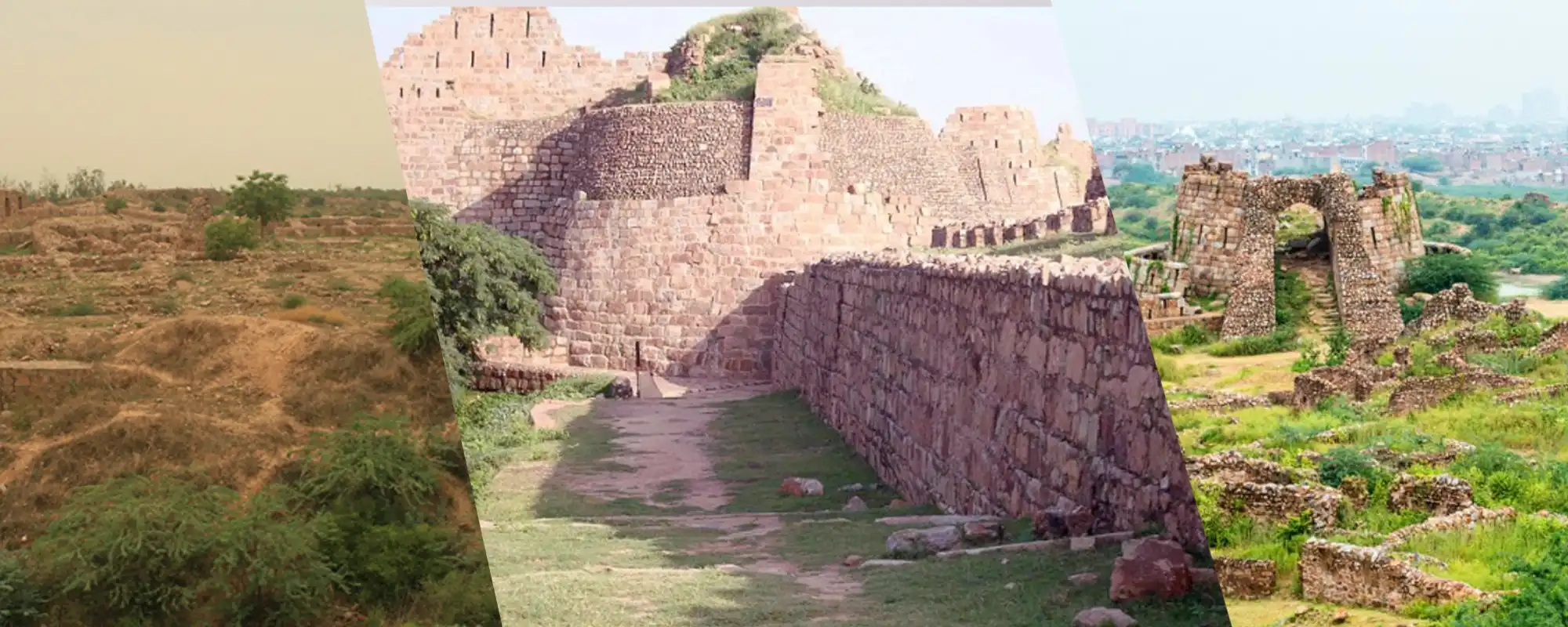
Putting up with the ravages of time, the Tughlaqabad Fort is a sheer existing symbol of the strength of the Tughlaq Dynasty. The fort was built between 1321-1325 AD by Ghiyas-Ud-Din Tughlaq, who was then called Ghazi Mallik. The Fort is located near the Okhla industrial area and is one of the most beautiful specimens of Islamic architecture. It took four years to construct the fort, and 15 years later, it was abandoned. It is said that Sufi saint Nizamuddin Auliya cursed Tughlaqabad as a punishment for the arrogance of Ghiyasuddin. The fort is believed to be haunted by djinns
Tughlaqabad Fort was established during 1321-1325 AD by the first ruler of the Tughlaq dynasty named Ghiyas'-Ud-Din Tughlaq. He was the Prime Minister of Alauddin Khilji and the Tughlaqabad Fort was his most ambitious work. During those times, the Delhi Sultanate was under constant attacks by the Mongols, therefore, the fort was constructed primarily as a stronghold for defensive purposes against the ever-invading Mongols rather than an architectural establishment.
The Tughlaqabad Fort is the most beautiful specimen of pure Islamic architecture and has a touch of the Sultana. The Military style of architecture can also be seen here as the Fort was built to serve the purpose of protecting the city. The entire fortification is made of granite and stands on a perimeter of roughly 6 kilometers. Once a majestic fort, Tughlaqabad Fort is now could be seen in ruins, scattered in bits throughout the way.
According to history and folklore, it is said that the Sufi saint Nizamuddin Auliya cursed the Tughlaqabad Fort on the accounts of a dispute with Ghiyas-Ud-Din Tughlaq. He said, “Either lived inhabited or will live Gujjarsâ€. The saint was very angry with the ruler for engaging all the workers for the Fort construction due to which the work of his stepwell got delayed. This clash between the royal and the saint became a legend in India and this clash was responsible for the downfall of the Tughlaq dynasty. People nowadays claim that the ghost of the emperor haunts the place.
Just like any other tourist attraction, the visit to Tughlaqabad Fort is also best to be enjoyed during winter between the months of October and April.
| Category | Entry Fees |
|---|---|
| Indians | INR 20 |
| Citizens of SAARC and BIMSTEC countries | INR 20 |
| Foreigners | INR 200 |
| Children (Up to age of 15 years) | Free |
Being situated in the capital of India, Delhi, Lotus Temple is well connected by the bus and Metro. The nearest metro station is the violet line, Kalkaji station. One can take hail an auto or even walk down for 15 minutes (1 km).
The Tughlaqabad Fort was built by GhiyÄs-Ud-Din Tughlaq, who was the founder and the first ruler of the Tughlaq Dynasty. The fort was built in the year 1321.
The Tughlaqabad Fort is located near the Okhla Industrial area in Delhi.
The best time to visit Tughlaqabad Fort is during winter between the months of October and April.
Delhi is a well-connected cosmopolitan city; one can choose any mode of transportation according to their convenience. You can either commute with the help of public transport like buses, cabs, etc or drive yourself.
Copyright 2012-2022 Indiamap Digital Pvt Ltd. All rights reserved. Privacy Policy | Terms of Use